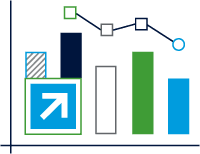On 13 January 2016, the IASB published the long-awaited IFRS 16 Leases.

The project to issue a new leases standard began in 2006, primarily in response to user concerns about off-balance-sheet assets and liabilities arising from operating leases. Since then, the boards have jointly published a Discussion Paper in March 2009, and two Exposure Drafts respectively in August 2010 and May 2013. The new standard will be effective from 1 January 2019. Earlier application will be permitted for entities that apply IFRS 15 Revenue from Contracts with Customers before 1 January 2019.
We provide a broad overview of the lessee and lessor accounting models under IFRS 16, as well as transitional requirements.
Lessee Accounting
Under IFRS 16, almost all leases will be recognised on the balance sheet. This is because the distinction between finance and operating leases has been removed for lessees. Instead, the standard adopts a single lessee accounting model.
Recognition & Presentation
Under IFRS 16, a lessee recognises assets and liabilities for all leases with a term of more than 12 months, except for leases of low-value assets (such as laptops and office furniture). A lease asset is a right-of-use asset representing a lessee’s right to use the underlying leased asset. A lease liability reflects a lessee’s obligation to pay for the right to use the asset.
Measurement & Presentation
Lease liabilities are initially measured on commencement of the lease at the present value of all future lease payments. Those payments include fixed payments, variable payments which link to an index or rate, and payments the lessee is reasonably expected. Lease assets are initially measured at the same amount as lease liabilities, plus initial direct costs, lease payments made before commencement date, and an estimate of costs of dismantling the underlying asset and restoring the site. The lease term includes extension periods if it is reasonably certain the lessee will exercise the option to extend the lease. The discount rate applied is either the lease’s implicit rate, or if not determinable, the lessee’s incremental borrowing rate.
On subsequent measurement, a lessee amortises the lease asset applying the depreciation requirements of IAS 16 Property, Plant and Equipment, and accrues interest on the lease liability similar to other financial liabilities. In the income statement, a lessee will recognise amortisation of lease assets and interest on lease liabilities.
In the cash flow statement, lease payments will be separated into the principal portion (within financing activities) and the interest portion of the lease liability (within operating or financing activities).
Disclosures
Both quantitative and qualitative disclosure requirements for lessees are more extensive under IFRS 16 compared to those currently required under IAS 17 Leases.

Lessor Accounting
The lessor accounting model under IFRS 16 is largely unchanged from the existing requirements in IAS 17. The lessor is still required to apply the same principles as under IAS 17 to distinguish between finance leases and operating leases, and apply the relevant accounting requirements accordingly. However, IFRS 16 requires enhanced disclosure from lessors in relation to risk exposure.
Transitional Requirements
All existing leases will be required to be reassessed when IFRS 16 is adopted. A lessee is permitted to apply either a fully retrospective approach in accordance with IAS 8 Accounting Policies, Changes in Accounting Estimates and Errors, or a modified retrospective approach whereby the lessee recognises the cumulative effect of applying IFRS 16 in the opening balance of retained earnings without restating the comparatives.
Who is affected?
IFRS 16 will affect all entities that enter into lease arrangements, in particular lessees who currently have operating leases. Recognising new lease assets and liabilities will significantly affect capital ratios such as debt-to-equity ratios and may hold implications for debt covenants. In preparation for IFRS 16, we suggest entities consider the terms of their ongoing leases and new leases under IFRS 16 and the implications for future financial reporting.
FOR MORE INFORMATION
If you require assistance on IFRS 16 Leases, please contact one of our advisors.






